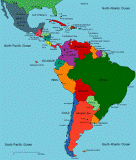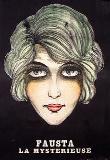In search of Bloomsdays past and present
IN THE HEART OF THE HIBERNIAN METROPOLIS
 Today, June 16 2004, is the centennial of Bloomsday, the day Leopold Bloom wondered around Dublin in James Joyce's Ulysses. Joyce set his entire novel on June 16, 1904 -- the day of his first date with Nora Barnacle, the woman who later became his wife. While the Irish are celebrating for five months, in a festival lasting from 1 April 2004 to 31 August 2004, purists are in Dublin today.
Today, June 16 2004, is the centennial of Bloomsday, the day Leopold Bloom wondered around Dublin in James Joyce's Ulysses. Joyce set his entire novel on June 16, 1904 -- the day of his first date with Nora Barnacle, the woman who later became his wife. While the Irish are celebrating for five months, in a festival lasting from 1 April 2004 to 31 August 2004, purists are in Dublin today.
Celebrations are also organized in 40 other countries, from Italy, Switzerland and France to South Korea, but the German newspaper taz (not this Taz) took it one step further and reworked itself into a version of the novel.
THE WEARER OF THE CROWN
"Mr. Leopold Bloom ate with relish the inner organs of beasts and fowls."
WITH UNFEIGNED REGRET IT IS WE ANNOUNCE THE DISSOLUTION OF A MOST RESPECTED DUBLIN BURG
Leopold Bloom's community has changed:
Since the last time I was in Dublin -- eight years ago -- a miracle has occurred in the tiny Jewish community: it has grown. In the last decade, the population, which peaked shortly after World War II at around 5,000, rose from a low of 1,000 or so to a healthier 1,790. But this miracle, in the nature of miracles everywhere perhaps, is actually an illusion. Ireland's buoyant economy has brought a floating, temporary population of foreign workers into the country, including several hundred Israelis working in information technology. But among those with deep roots in Ireland, like the Handelmans, gray heads predominate, and the children are still leaving.
This situation is not unusual, as Jews are vanishing all over Europe, down in total population from almost four million in 1946 to two and a half million now, their ranks diminished by a combination of emigration, intermarriage and low birthrate. Ireland looks as if it might be the first of the Western European countries to lose its Jewish community altogether. This would be a unique loss. It is always risky to sketch national and ethnic characteristics, given the magnetic pull of the stereotype, but there is something undeniably distinct about the Irish-Jewish community. It is a singular pleasure to hear Yiddish mashed into an English sentence with an Irish accent -like the way my Aunt Pearl rolls her tongue around fa'ribel (''grudge'')
LINKS WITH BYGONE DAYS OF YORE
In the New York Times Sunday Books Review article Bloomsday, Bloody Bloomsday, John Banville has memories of past Bloomsdays, his, and other writers':
Bloomsday (a term Joyce himself did not employ) was invented in 1954, the 50th anniversary, when the novelist Flann O'Brien and the writer and magazine editor John Ryan organized what was to be a daylong pilgrimage along the ''Ulysses'' route.
The pilgrimage ended early, and very much like an Irish wake.
SAD
Also in the Banville article, Jorge Luis Borges is the protagonist in a scene out of a Borgesian short story,
Cronin was the instigator of another Bloomsday event in 1982, when writers from around the world were invited to Dublin to celebrate Joyce's own centenary. Among the many notable artists who came was -- yes -- Borges, who by then was in his 80's and totally blind. He was collected from the airport by a couple of volunteer meeters-and-greeters, who deposited him in his suite at the Shelbourne Hotel and went off to do more meeting and greeting. When they returned, late in the day, Borges was still in his room, and in fact had not left during the intervening hours. What was he to have done, Borges asked, since he did not know the city or anyone in it? Ever since, when I hear talk of Bloomsday celebrations, that, I am afraid, is the image that springs immediately to mind: an old, blind writer, one of the greatest of his age, sitting alone in a hotel room overlooking an unseen St. Stephen's Green
In tribute to Ulysses, and with apologies to James Joyce, from The Bad Hair Blog. Headlines shamelessly stolen from Chapter 7, Aeolus, pp 96-123, First Vintage Books Edition, 1986.










0 Comments:
Post a Comment
<< Home